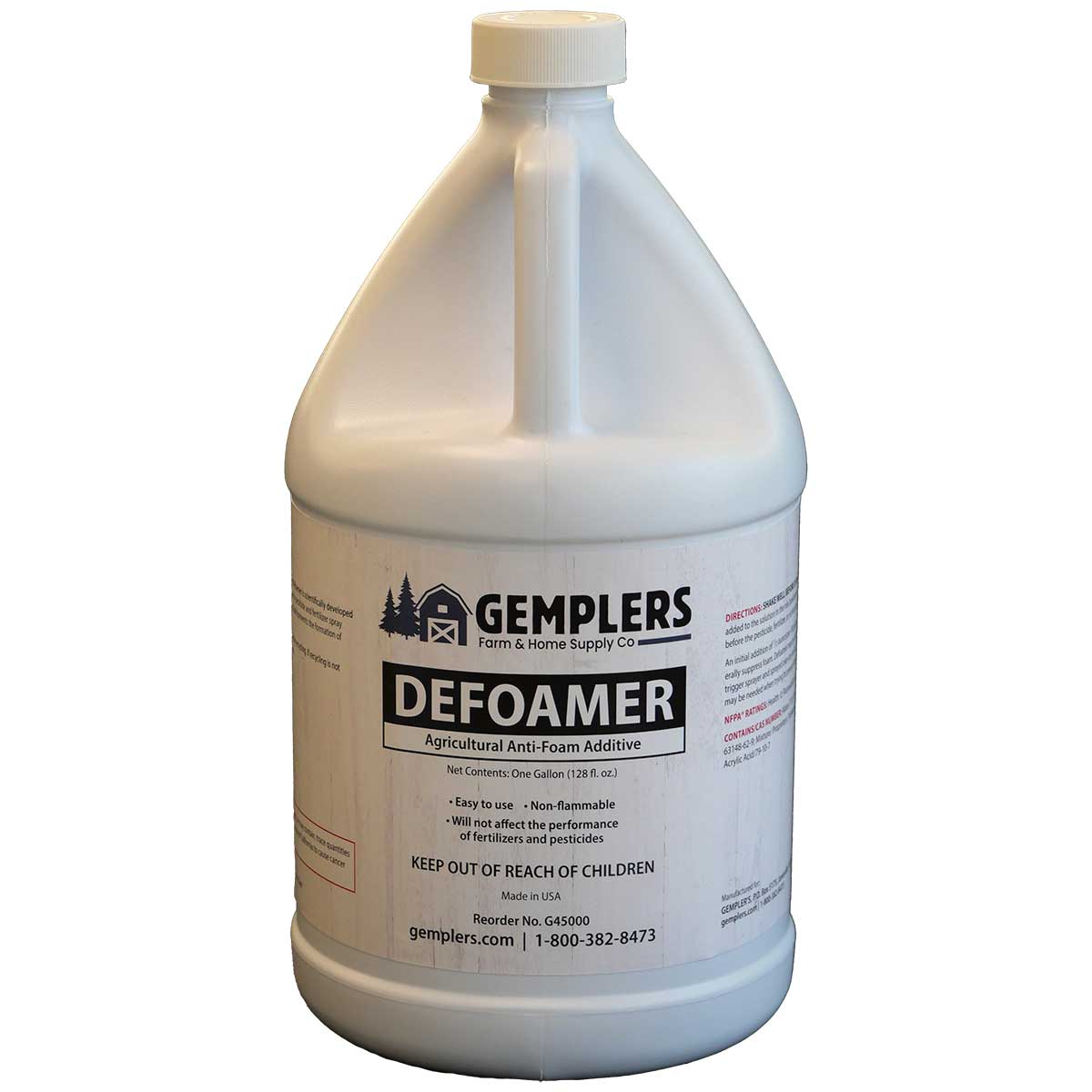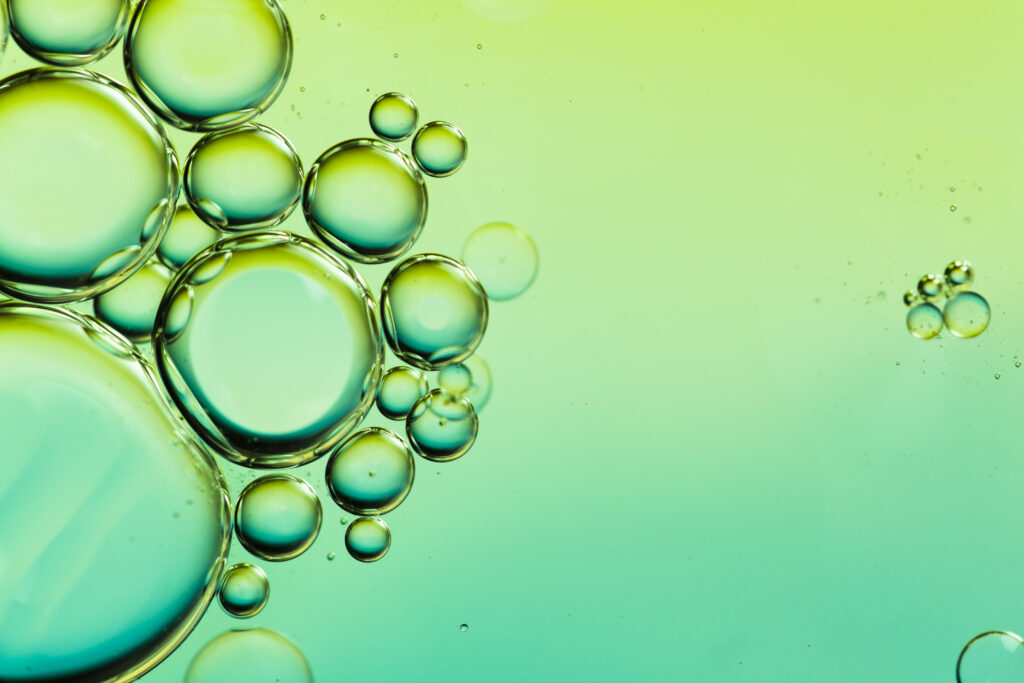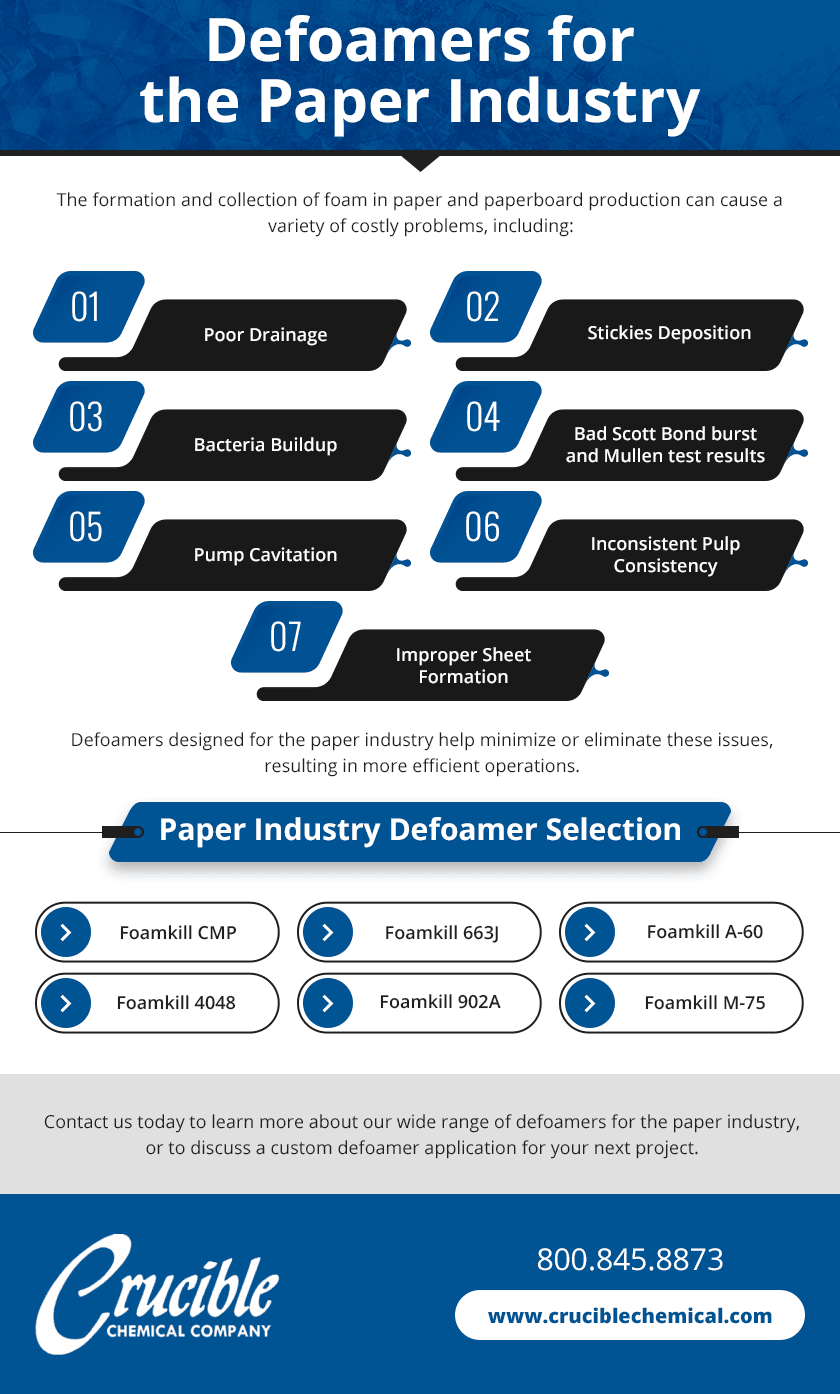The Future of Defoamers: Innovations and Trends in Foam Control Solutions
Selecting the Right Defoamer for Your Specific Application Demands
Choosing the suitable defoamer for details application demands is a nuanced process that requires mindful consideration of several variables, such as the foam operating, tool, and kind conditions. Recognizing the subtleties of defoamer performance-- including rate and perseverance-- while also accounting for ecological and regulatory elements is critical.
Understanding Foam Formation
Foam formation takes place when gas is entraped within a liquid, creating a steady structure of bubbles. This phenomenon can considerably affect various industrial processes, especially in fields such as food manufacturing, drugs, and wastewater therapy. The visibility of foam can prevent blending, lower item top quality, and also bring about functional inadequacies.
Foam usually creates due to a mix of elements, including surface-active agents, anxiety, and the qualities of the liquid stage. Surfactants reduced the surface area stress of the liquid, helping with the formation of bubbles that can stabilize and coalesce. Agitation, whether from mechanical mixing or gas intro, boosts bubble formation, leading to increased foam quantity.
Comprehending the technicians of foam development is essential for sectors intending to maximize their processes. By identifying the details conditions that advertise foam generation, organizations can execute methods to alleviate its impacts. This expertise lays the foundation for picking proper defoaming representatives that successfully target the distinct challenges postured by foam in different applications. As a result, a comprehensive understanding of foam development is important for improving performance and preserving product integrity throughout different sectors.
Kinds Of Defoamers Available
Various kinds of defoamers are readily available to attend to the difficulties postured by foam in commercial applications. defoamers. Broadly categorized, defoamers fall under three classifications: silicone-based, non-silicone-based, and natural defoamers
Silicone-based defoamers are renowned for their efficiency and security throughout a variety of temperatures and pH degrees. They are typically utilized in applications where solid foam reductions is necessary, such as in adhesives, paints, and finishings. Their reduced surface stress allows for rapid foam collapse.
Non-silicone-based defoamers, usually made from organic compounds, provide a choice for applications delicate to silicone deposits. These defoamers can be further divided into polyether and ester types, each tailored to fulfill particular formula demands. Non-silicone defoamers are often utilized in food handling and individual treatment products due to their compatibility with various formulas.
Natural defoamers, originated from plant or pet sources, are gaining traction as a result of their environment-friendly profile. These products are particularly appealing in applications where regulative compliance and sustainability are critical, such as in agrochemicals and biotechnology.
Selecting the best kind of defoamer is important for enhancing performance and ensuring compatibility with details applications.
Trick Application Factors To Consider
When choosing a defoamer, it is important to think about the particular application requirements to ensure ideal performance. defoamers. Different sectors have unique needs, such as food handling, drugs, or wastewater treatment, and each application might need distinct defoaming homes
Key variables to assess include the tool in which the defoamer will be made use of, whether it is water-based, oil-based, or a combination thereof. The temperature and pH degrees of the application can also considerably influence the performance of a defoamer. Furthermore, compatibility with other chemicals existing in the system is crucial to stop damaging reactions that can compromise efficiency.
An additional important consideration is the foaming behavior of the particular system. Comprehending whether the foam creates rapidly or gradually this hyperlink can assist the selection of a defoamer that targets the origin efficiently. Moreover, the preferred rate of defoaming can influence the selection, as some applications need quick activity while others may endure slower defoaming processes.
Last but not least, environmental and regulative factors to consider should not be neglected, particularly in sectors with strict compliance demands. Selecting a defoamer that lines up with these variables ensures both efficiency and safety and security in the application.

Efficiency Screening Methods
Evaluating the efficiency of a defoamer calls for an organized strategy to screening that precisely measures its effectiveness in particular applications. Various efficiency screening approaches can be utilized to determine the ideal defoamer for a provided formulation.
One common approach is the bubble examination, which assesses the defoamer's ability to minimize foam quantity with time. This test involves creating a stable foam and then including the defoamer to observe the price of foam collapse. Another approach is the vibrant foam test, where foam is produced under controlled conditions to mimic real-world application scenarios. This strategy offers understandings right into how the defoamer executes under varying shear problems.

Eventually, choosing the proper efficiency screening method depends on the certain application and the sort of foam being resolved. Each approach supplies valuable information that can guide formula modifications and improve the efficiency of the defoamer in useful applications.
Finest Practices for Choice


Following, think about the defoamer's efficiency in click regards to rate of activity and perseverance. A quick-acting defoamer might be essential for procedures where rapid foam suppression is critical, while a more try these out persistent formulation might be needed for long term foam control. In addition, evaluate the environmental impact of the defoamer, including its biodegradability and any kind of governing compliance demands.
Conduct trials with picked defoamers to identify their effectiveness in real-world problems. By sticking to these best methods, you can enhance foam control performance and guarantee the longevity of your processes.
Verdict
In summary, selecting the ideal defoamer demands a detailed analysis of numerous elements, consisting of foam type, tool, operating problems, and ecological considerations. Recognizing the distinct characteristics of foam development and the available defoamer choices is essential. Furthermore, employing effective efficiency testing methods and sticking to finest techniques during the choice procedure will boost the likelihood of accomplishing optimum defoaming results. Inevitably, a well-informed choice approach will certainly deal with details application needs and reduce frothing obstacles effectively.
Selecting the ideal defoamer for particular application needs is a nuanced procedure that demands cautious factor to consider of several elements, such as the foam operating, kind, and medium problems.Picking the ideal defoamer is essential for attaining optimal performance in foam control applications. A quick-acting defoamer might be essential for procedures where quick foam reductions is important, while a much more consistent formula may be required for extended foam control.In recap, picking the suitable defoamer requires an extensive assessment of different elements, including foam type, tool, operating problems, and environmental considerations. Comprehending the special attributes of foam development and the offered defoamer alternatives is essential.